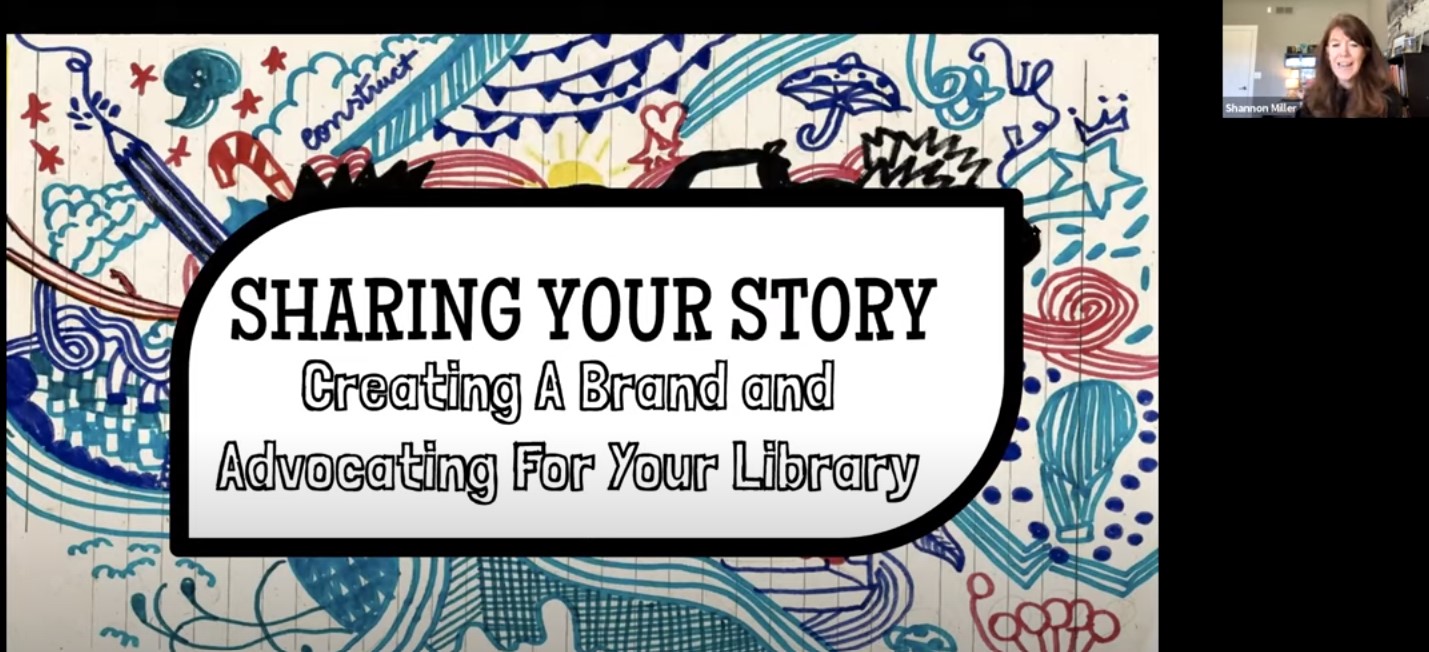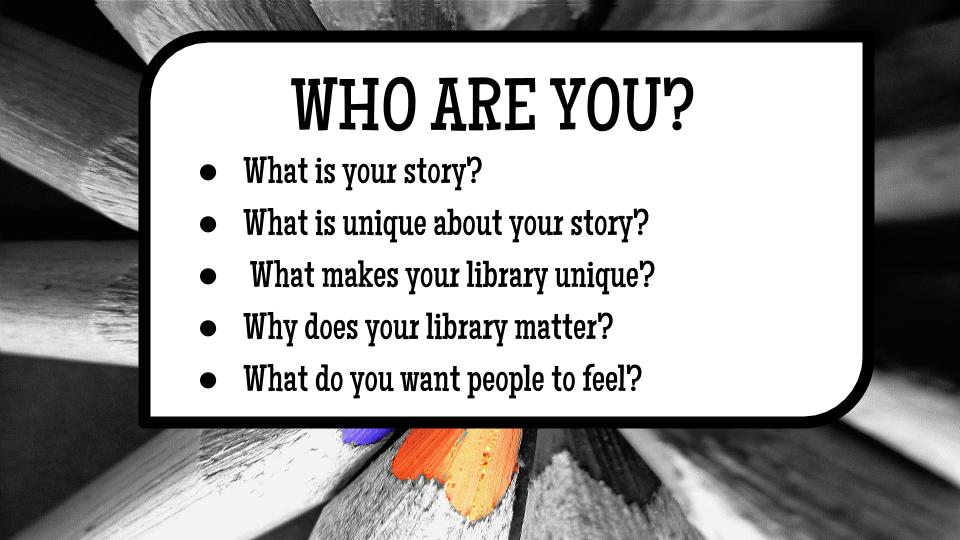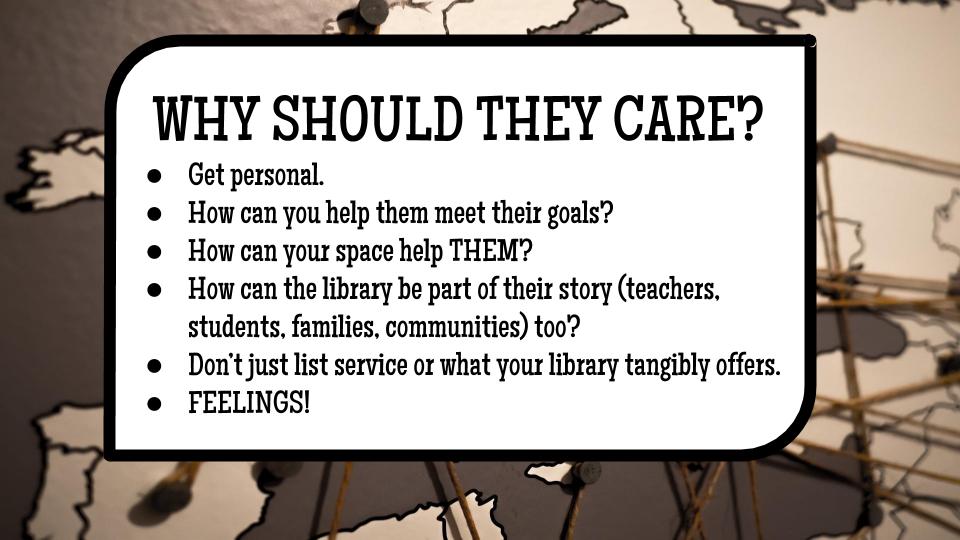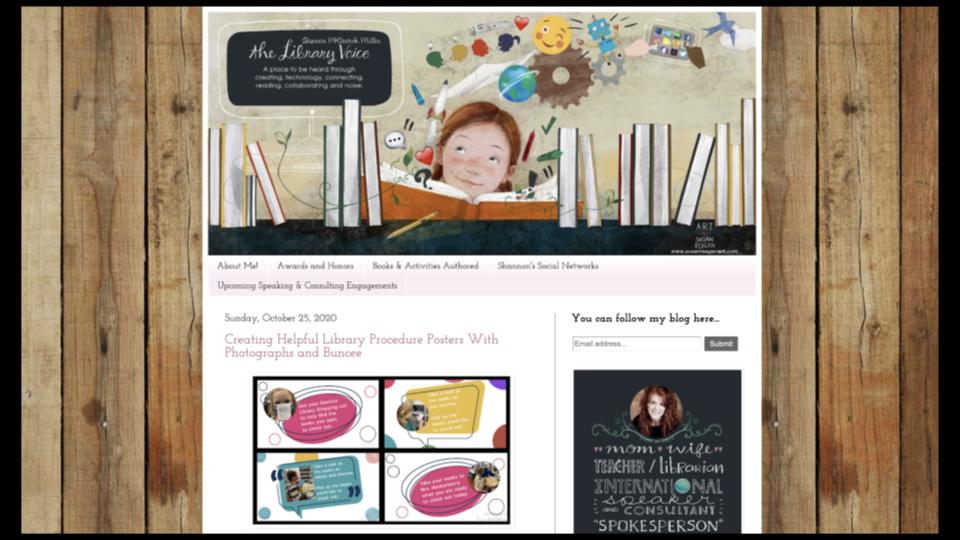How to Market For A School Library
Creating a brand and shaping a voice is the first step in how to market for a school library

Now is the time for librarians to lead, and leadership takes strategy and courage, according to Shannon McClintock Miller, District Teacher Librarian and Innovation Director, Van Meter Community School District in Iowa.
In her presentation “Sharing Your Story...Creating A Brand and Advocating For Your Library” during the recent NYC DOE “Beyond Access” virtual forum, Miller shared advocacy and branding ideas and strategies designed to empower librarians and media specialists to share their own library stories, goals, and visions, especially during the challenges of a pandemic.
“I feel overwhelmed every day, but I have to step back and think about the things that are most important,” Miller said. “Our kids are in school now, so I think about how I am serving them first. Are the things that I’m creating around our marketing plan helping them, if it’s books, or it’s literacy, or if it’s something else from the library.”
Miller discussed the importance of developing a marketing plan for a library to inform students, teachers, and the community of the resources available. She also discussed innovative ways to create and shape the voice of a library with various digital tools and student help. And then how to get out the word.
“Don’t be afraid to share your story with the world, and your community,” Miller said. “When you do, you’re leading from the library, and that’s the thing we want!
Watch the full session:
View the presentation slide deck here
Tech & Learning Newsletter
Tools and ideas to transform education. Sign up below.
Key Takeaways
Creating a brand. Miller posed two questions that all librarians and media specialists should ask themselves:
- How do you lead, create change, and advocate within your library?
- How do you create change and lead beyond your library?
As an advocate, you must put branding and marketing in place to share the story of your library, Miller said, and that includes determining a brand. “Everybody has a brand, even if you think you don’t,” she said.
In addition to the name, it includes features such as identities, values, vision, purpose, logo, and mission, and even little things such as the personality of the library and what colors are involved.
Key questions to consider when creating a library brand:
Who are you?

Who needs to know?
We need to think about who our audience is, and if there’s more than one, Miller said. The story remains the same, but we need to think about how we can communicate it in different ways.
Why should they care?

“This year, in particular, we need to think about what our libraries can offer us beyond tangible items--that social-emotional learning part of it,” Miller said. “My kids really love to come to the library to see me, each other, and it’s a place they want to be--the heart of our community.”
Visual art. In a visual world, we must stand out visually, said Miller. “I regularly ask, ‘How I can make an impact on our students, on the teachers, and on our families?’” she said. “We need to make sure we make an impact in a really fun and meaningful way.” Miller uses multiple digital tools and resources to connect, such as Buncee or social media. She discussed how she was initially uncomfortable “tooting my own horn,” but realized everything librarians share really makes a huge difference and the library program is something that everyone is proud of.
Finding your voice. Miller talked about how when she started, she didn’t go in thinking that she was going to have to brand her library program. While talking with students, they mentioned that they appreciated how the library always lets them have a voice, so Miller launched the Van Meter Library Voice, a blog with accompanying social media, most of which comes from the students. Miller worked with an artist who created original work focused around key elements, tools, and things Miller loved. She keeps common themes, images, and fonts for consistency.

Digital resources. To help promote and market a library, Miller recommended a number of digital tools. Buncee, for example, offers an abundance of tools and templates for libraries, such as backgrounds that can be used in making posters or stickers for genrefying. Users can also create images with embedded links, for use on blogs and digital communication.
Miller also uses PicMonkey to make collages, and also edit existing images and create new ones. For making bookmarks, she recommends Overnight Prints--Van Mater students design the two-sided bookmarks and Overnight Prints produces the items at a reasonable cost.
Miller has created items such as monthly choice boards in Padlet to showcase specific resources and activities around a theme, such as an election or Thanksgiving. These can be edited easily and shared with teachers. “Some of our best work is collaborating with the teachers,” she said.
PD power. Given how tight teacher time and resources can be, it’s important for librarians to remind teachers what the library can do for them, Miller said. She creates a new campaign every year to showcase what’s new. For example, a few years ago, she designed a marketing campaign around a movie theme, and gave each teacher a ticket, candy, and a poster talking about everything the library was offering, such as classroom support for digital citizenship or making.
Marketing matters. First step is assessing ‘customer’ needs, in particular, who is using the library--kids, teachers, administrators, families, etc. Miller recommends starting with the library marketing toolkit from AASL.
In regard to marketing, Miller extolled the use of social media tools such as Instagram, Facebook, Pinterest, and Twitter. “When we went to remote learning in March, our social media became critical because I was able to constantly share items from there,” she said. By using multiple social media tools, you can ensure that your message reaches every audience.
Of course, marketing looks different this year because so many students are learning at home, so it’s critical to make sure that all resources are accessible to all students.
Reading rainbows. Miller has done a lot of marketing this year around e-resources, especially since so many students are remote and accessing ebooks. For example, she pulled all the books that the district had in Destiny and made a “DestinyFlix” board for students. They also used BookHub to get books to students who were in classrooms, and created “shopping lists” for students to check out books. And they created virtual book posters and boards to share with students to get them excited about reading.
Team marketing. “Remember that you’re not alone in this!” Miller said. She encourages students to be part of the marketing team by taking photos, creating posters, brainstorming campaigns, and involving them in other tasks. “Set realistic due dates, stay with it, delegate tasks, be flexible, and remember no matter what, always put the kids first!”
Ray Bendici is the Managing Editor of Tech & Learning and Tech & Learning University. He is an award-winning journalist/editor, with more than 20 years of experience, including a specific focus on education.
